The pioneer of upvc rooftile manufacturing in Iran!
+9120465839
Sales unit Connection
Not many people know about membrane roof covering, since PVC roofing membrane is mostly used on commercial buildings. But if you want to know whether it can be used for your house roof or not, there are some important factors you need to consider- before choosing roofing membrane materials.
Over time, rain and different weather contributes to a rotting roof and eventual interior damage. As a result, a large area of the roofing system needs to be replaced- if the best roofing material is not used.

Roof covering is a large investment and you want to see the result of your investment. In order to get the expected life and performance out of your roof, you need to choose the best roofing membrane. Lack of maintenance not only result in leaks but also premature replacement of the roof itself. Does PVC roofing membrane increase the life of your roof? What are Types of Single-Ply Roof Membranes? What are the advantages and disadvantages of PVC membrane? What is the alternative to PVC roofing? Continue reading this article, because we’ve got you covered
Although modified bitumen is a kind of roofing membrane; but here we are mostly discussing on synthetic rubber like EPDM or thermoplastic membrane such as PVC, TPO and their comparison to uPVC roofing sheets – as a better alternative to PVC roofing membranes.
Roof membrane is a layer mostly known for its watertight covering and interior protection of the building. PVC roofing membranes are used in flat roofs and very low pitched roofs.
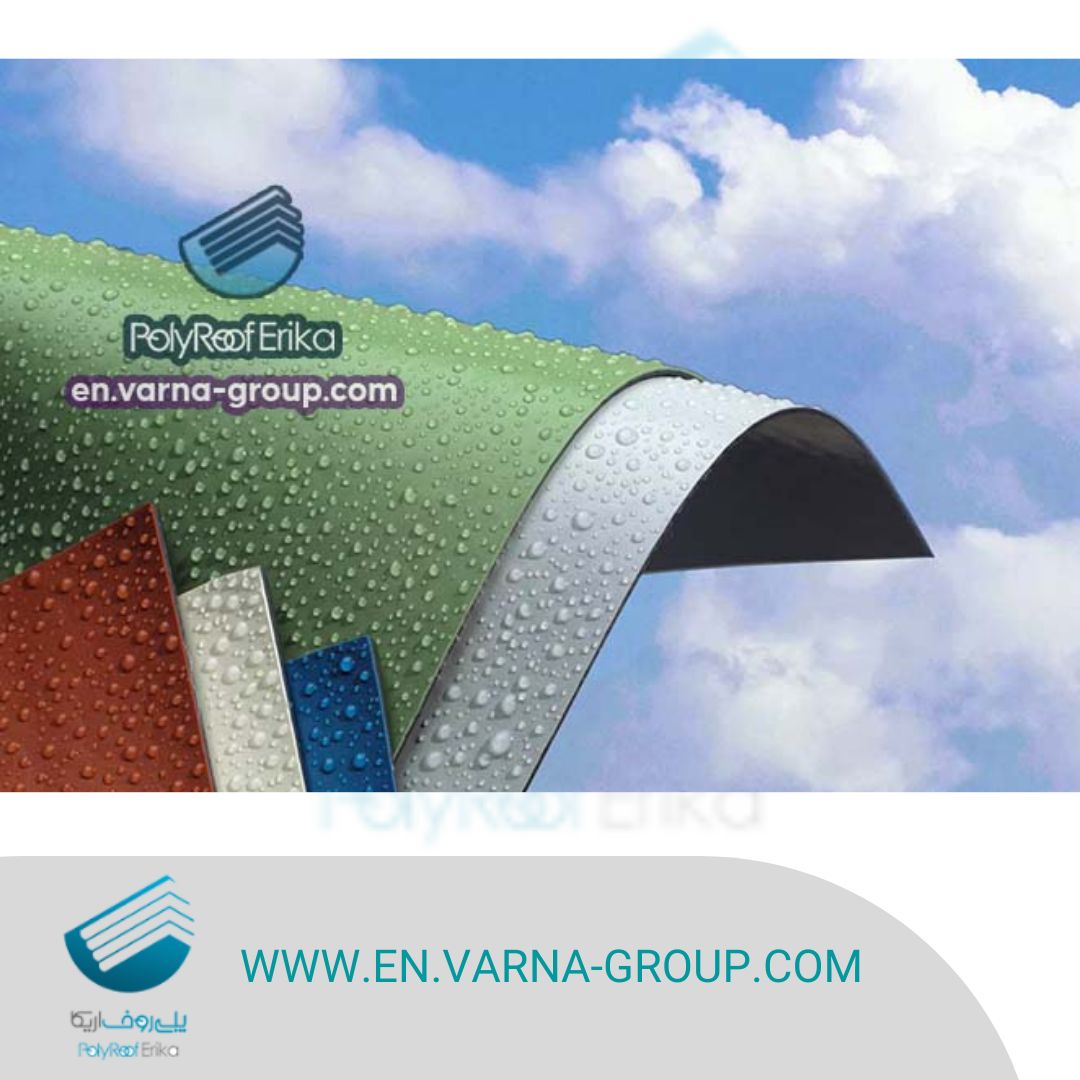
A low-slope roof does not have enough steepness. It is called low-slope when its pitch is below a 2/12. (2 vertical units up per every 12 horizontal units out).
Roof waterproofing is important. In high pitched roofs water runs off fast, but this does not happen in low-slope roofs. That is why one of the most common options for low-slope roofs is membrane sheet.
PVC membrane sheet for waterproofing the roofs is very important. Although PVC membranes are more expensive, but have some benefits over TPO and EPDM. It does not react to chemicals, oils and grease, making it the preferred roof membrane for the buildings that have grease issues or exposure to chemicals and oils. It is slightly more flexible than TPO which can help with the installing process and more durable when it comes to heat and sun exposure – compared to TPO & EPDM.
Durability and longevity of your roof depends significantly on the installation. Therefore, only licensed and reliable contractors should install PVC roofing. For best results, you should work with a professional roofer that has lots of experience in installing single-ply membrane roofing.
Insulation in roof membrane is required. Insulation Prior to installing of PVC roofing membrane is important; because it reduces heat loss and saves energy. Amount of heat is taken care of by PVC white surface. Typically some type of insulation board is put in. Most common insulation material is ISO or EPS foam board.
Hot air welding PVC membrane includes handheld & automatic welding.
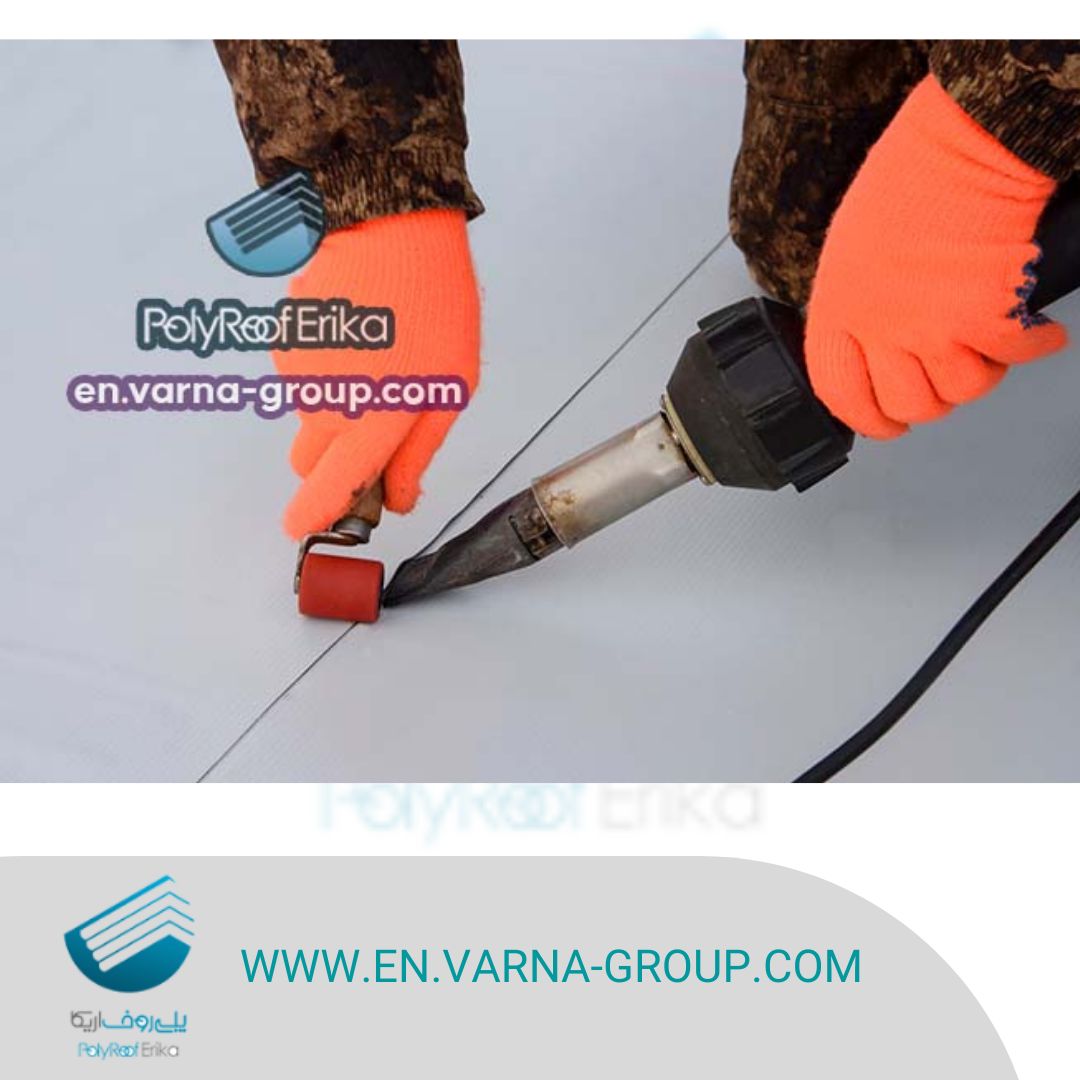
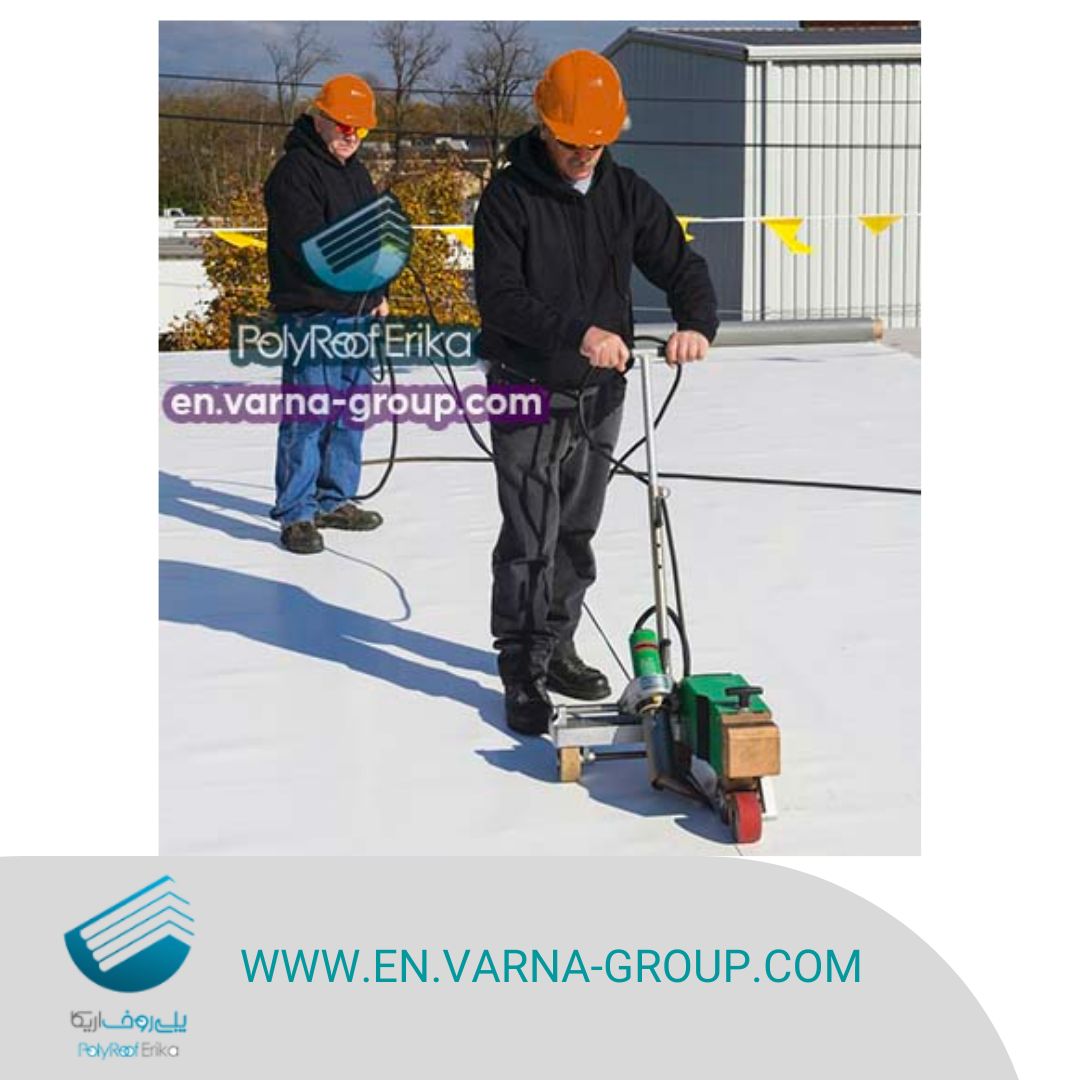
When PVC flat roof installation is automatically done, the installation process goes faster.
PVC membrane sheets can be installed in 3 ways.
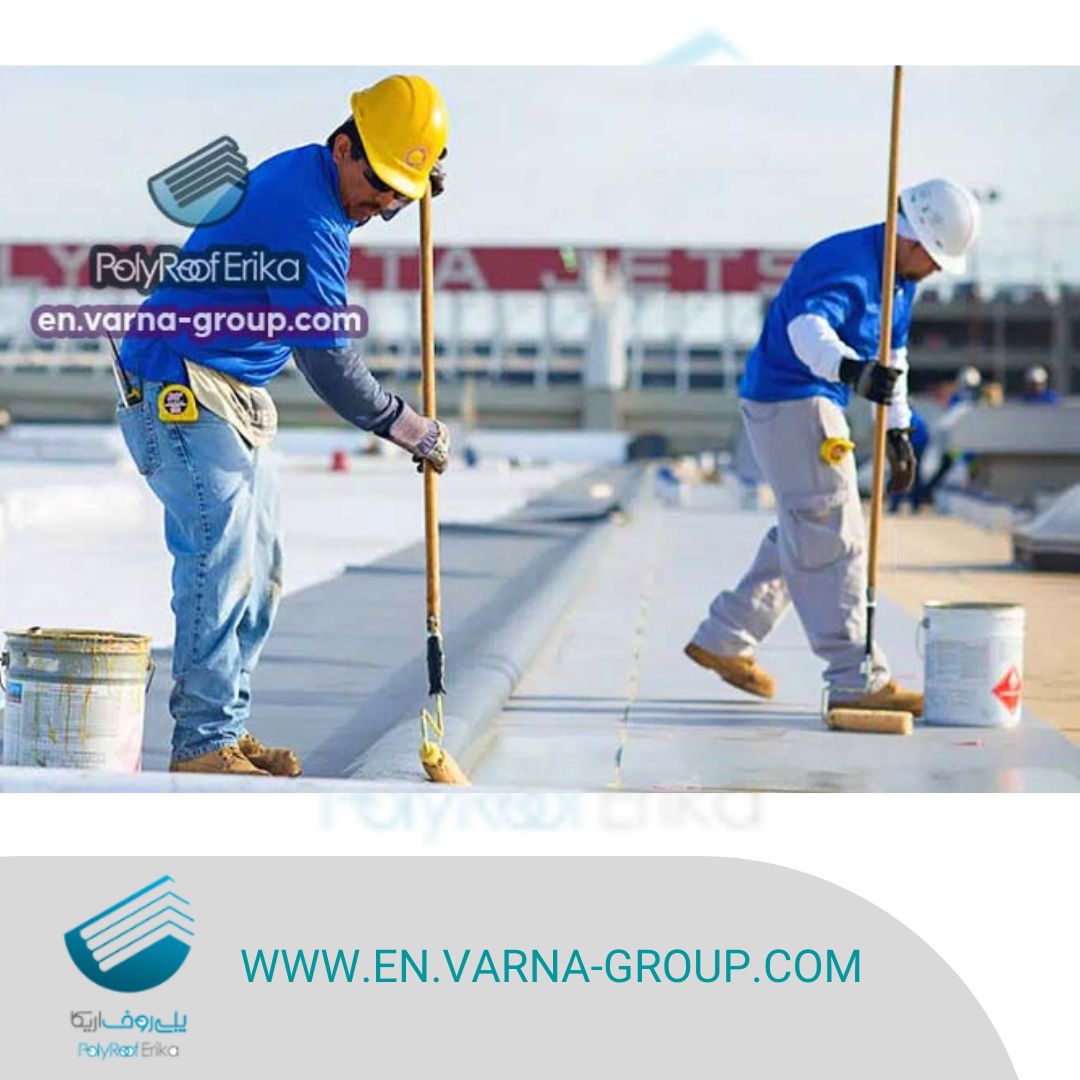
The PVC roofing membrane is glued to the existing substrate using a special adhesive. This method is usually used in case PVC membrane cannot be easily attached by screws or other fasteners, like over a concrete deck. So In this case first attach the insulation with adhesive and then attach the membrane – to the insulation layer with adhesives – to the roof deck.
Although this is a quick and simple membrane installation method, it has a big disadvantage. In case of roof deck poor ventilation, condensation forms underneath a PVC membrane; this will cause the adhesive to become loose and not holding the membrane tightly. As a result, the loose membrane will be susceptible to wind and other environmental threats.
Fully adhered installation method should only be used when the temperature is above 40 °F so that adhesives can bond properly. A roller is then used to press the membrane onto the glue on the insulation layer.
This method is more expensive and slower. Besides, it can lead to some problems: lots of glue have to be applied at the right time with proper temperature and it takes much time and effort.
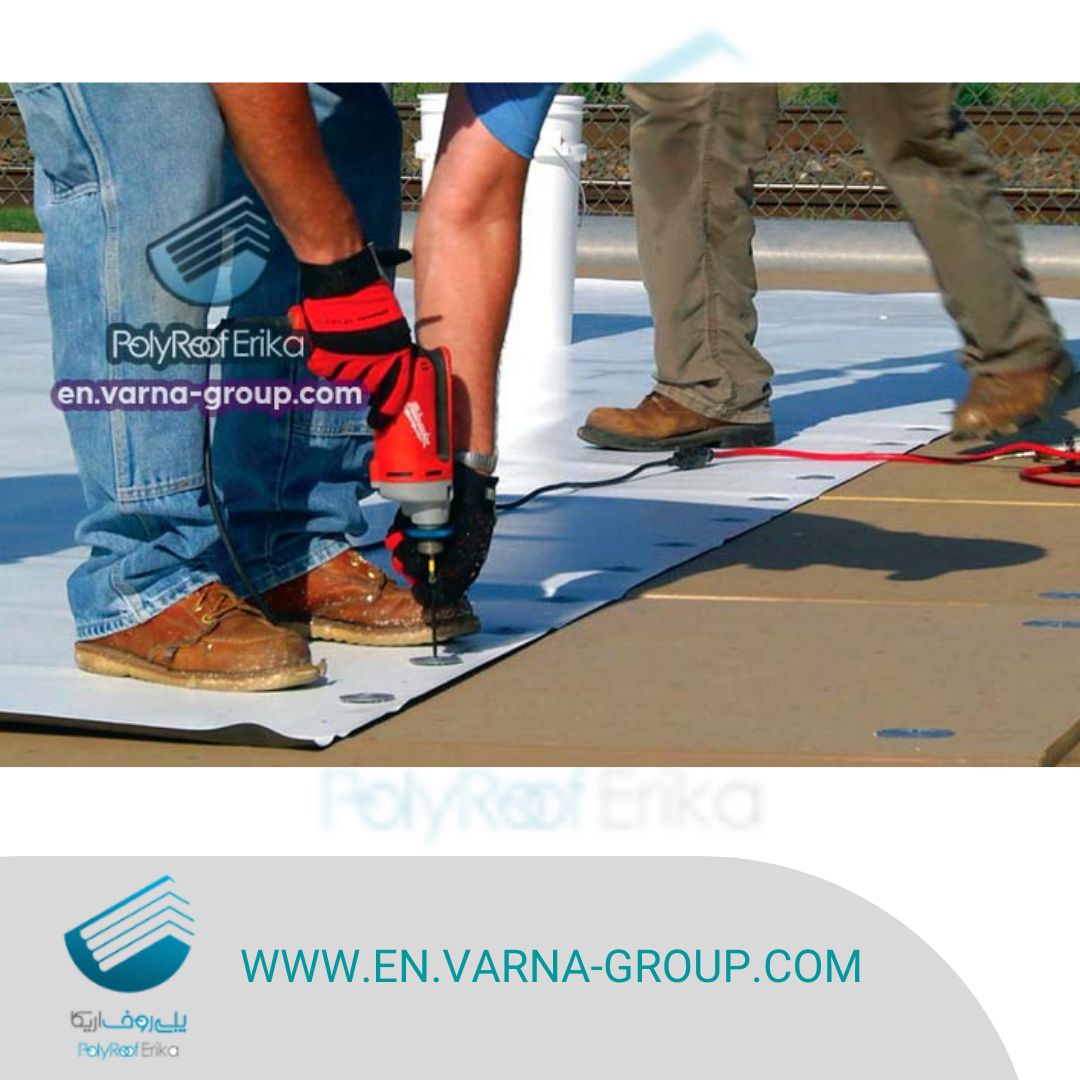
It is done by special screws and hot-air welding machines (or manually). This method makes PVC sheets overlaps last longer than with the adhesives.
This method can be installed faster and with lower cost. Most buildings have a metal deck and a layer of insulation on top. In mechanically attached installation, the membrane roll are attached with the screws – through the insulation boards – on metal deck. The screws are drilled at the edge of the membrane roll. Then a heat welder is used to watertight and seal the sheets. This seals any gaps and creates waterproof layers.
Mechanically attached roofs can be installed when the temperature is low, since adhesives are not used.
This method in installation of PVC roofing membrane ensures that even the strongest wind will not damage your roof. If your building is located in a high-wind area, mechanically-attached roof installation can be the best option.

PVC flat roof installation can still be done by another method – Ballasted Installation. In a ballasted installation, roof membranes are not adhered to the roof substrate. They are laid across the substrate loosely- rather than glued or fastened. PVC membrane is fixed with a ballast – made of washed river rock, concrete pavers, etc.
They make a waterproofing membrane and protect it from UV damage and harsh weather. They also add safety to walk on. But you have to make sure that your roof can endure the weight of the ballast.
Thermosets are made from synthetic rubber. When manufacturing, they are heated and completely cured. Hence they be shaped and formed into a heavy-duty bond.
EPDM roof membrane (Ethylene Propylene Diene Monomer) is the most common compound in thermosets. Due to their black color, they highly absorb heat. So they are not to be installed as roofing membrane on houses- especially troublesome during summer.
Although white roof membranes EPDM are also available that reflect UV rays; their coating do not last long and wear off over time.
Versatility of thermoplastic roof membrane is more than the previous one; since heat can be used to shape them.
Main compound used in thermoplastic membranes are: TPO roofing membrane (Thermoplastic Polyolefin) and PVC roofing membrane (Polyvinyl Chloride).
Although TPO is a cheaper roofing membrane; but its quality is getting better nowadays as a more affordable option in roofing membrane industry.
They are flexible materials for roofing membrane and reflect heat. PVC roofing membrane is older than TPO. It has a better performance on flat roofs, and it is more expensive. The highly beneficial PVC roofing membrane, comes at a cost. It is more expensive than TPO and EPDM membranes.
EPDM roofing membrane installation is at the lowest cost per square foot of all single-ply roofing membranes. TPO roofing systems are white so it will reflect the hot UV rays of the sun, so it won’t draw on the air conditioning as much in the summer months.
TPO materials tend to shrink and pull away from seams and curbs. Although reformulations have been done to improve the case, these potential issues have not completely gone away. Although EPDM is the cheapest of three but not as strong as TPO or PVC roofing membrane.
PVC roofing membrane sheets are resistant to root penetration and bacterial growth. They usually are at the highest safety rating in single-ply roofing industry and come at higher price – per square foot than the other roofing membrane system and the installation has more labor costs. Besides that, PVC roof membrane sheets have longer lifespan that EPDMs.
EPDM roofing membrane may begin to leak sooner than its expected service life – poor installation can make it faster. It mostly happens at roof penetration, flashing and seams. EPDM roof membrane needs to be glued around the corners with adhesives – which increases the possibility of opening the sheets from each other, while this rarely happens in PVC roofing membrane installation.
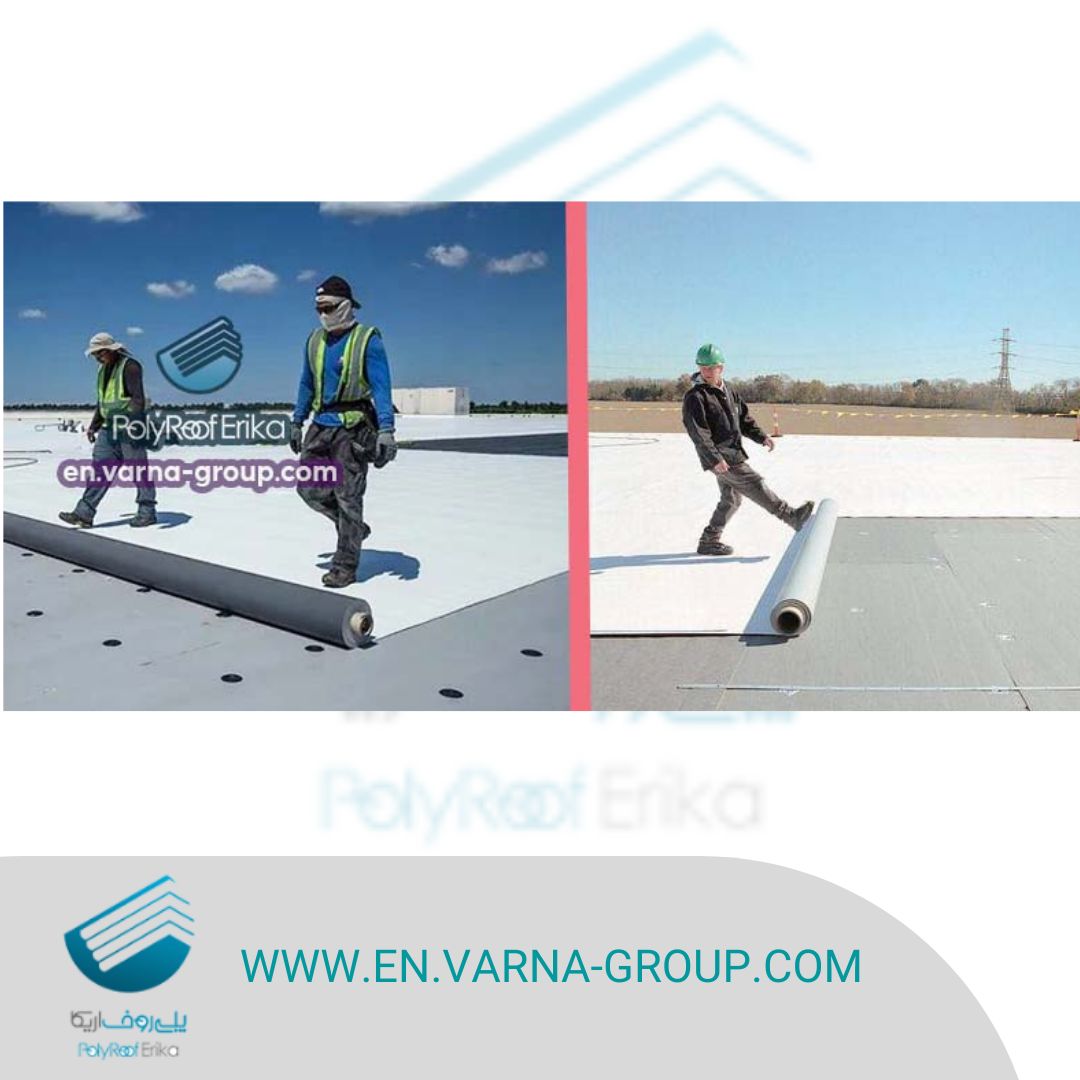
PVC roofing membrane offers better resistance to puncture and weathering. TPO roofing is made of ethylene or propylene rubber and is less resistant to chemicals compared to PVC membrane not a good choice when exposed to grease and chemicals.
On the other hand PVC roofing membrane is made by polymerizing vinyl chloride monomers. Plasticizers are then added to increase flexibility. Since they are more flexible, Installation of PVC membrane sheets are easier. But flexibility is not always an advantage; because it makes the material less durable and lead to quicker degradation, especially in extreme heat and UV exposure.
What are the advantages of uPVC roof tiles over PVC roofing membranes?
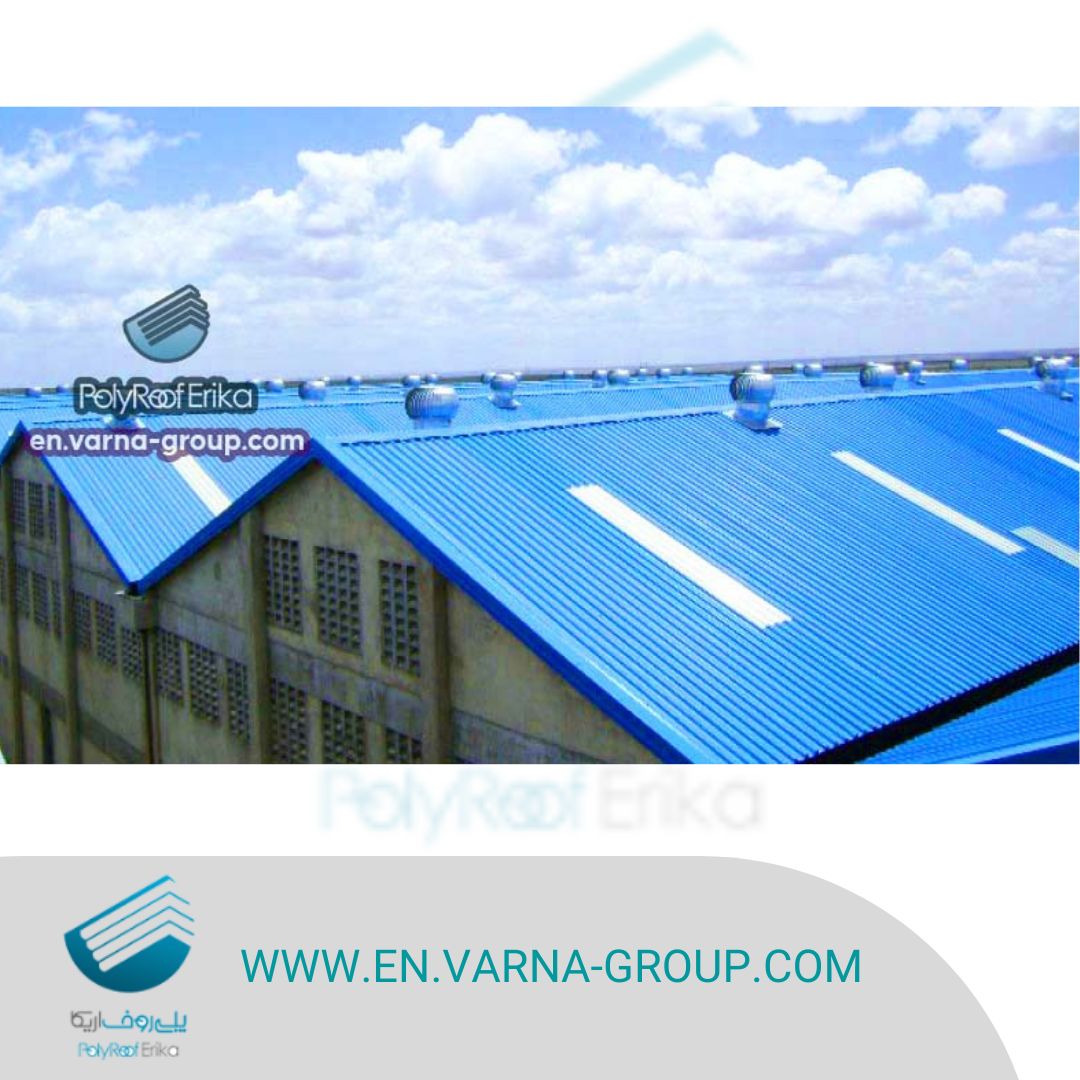
Unplasticized poly vinyl chloride (uPVC) roofing sheets are a good alternative for steel sheets, shingles, PVC roofing membrane, etc. we are – at Sepidfam Varna Company – manufacturing these roof coverings with co-extrusion composite technology. They are built in 1, 2, 3 and 4 layer sheets to make sure they are useful for any applications.

Benefits of uPVC roofing sheets
Here are the benefits of uPVC roofing sheet- as an alternative to PVC roof membranes.
Pros of uPVC roofing sheets:
FAQs
EPDM or PVC pond liner, which one is better?
Rigid liners like EPDM are stronger and more durable. It is the toughest pond liner but not suitable for large ponds. On the other hand PVC is cheaper and softer, especially a good option for fish ponds, as it is UV and Rot resistant. (Note – as pond covering not roofing).
How long do membrane roofs last?
Membrane roof lifespan is usually between 20-30 years; depending on the type of roofing material you choose.
Why is uPVC roof sheet better than PVC roofing membrane?
Installing PVC roof membrane must be done on a clean smooth surface. Extra debris can puncture the membrane and cause leaks. Therefore, old roof must be completely removed first, and then PVC membrane can be installed over top. It takes some extra time, effort and cost. Whereas in uPVC roof covering, sheets can be simply installed – in both conditions.
What is the difference between HDPE geomembrane & PVC geomembrane?
PVC geomembranes are flexible and easy to handle, while HDPE Geomembranes (High Density Polyethylene liner) is tough and non-flexible. You can use PVC material for flat roofs, but hdpe is usually used in green roofs.
What are the disadvantages of PVC roofing membranes?
PVC roof sheets are likely to puncture and shrink, seams can be pulled, and causing leaks. The process of maintenance and repair can be difficult; whereas uPVC roof panels, are low-maintenance and you can be sure that you will not need maintenance for years.
Can PVC membranes be used on steep slope roofs?
No, Due to the properties of the membrane which is soft and flexible – also the way they are installed – it is not possible. PVC roofing is designed only for flat-roof and low-slope roofs; PVC membranes make it difficult for pitched roofs to be covered on roof ridge; While UPVC sheets can be installed on almost any type of roofs.
What is the main advantage of uPVC roof sheets?
In the industrial field – especially the chemical industry – corrosion is a serious problem. UPVC roof sheet has no chemical reaction with salt, alkali and acids. It is a very suitable roof material for acid rain-prone areas and corrosive factories. It is particularly used in coastal areas.
About Sepidfam Varna
Sepidfam Varna – under the brand name Poly roof Erika – is a professional manufacturing and distribution Company. We manufacture anti-corrosion and non-flammable roofing tiles, such as: Trapezoidal Poly Roof Sheets, UPVC Slate Tiles, UPVC Roof Shingles, Eco Insulated Sandwich Panel, etc. We ship our anti-rust and fire proof materials with best quality – all over the world.
We have started our business since 2014. With cooperation of professional technicians and well-trained marketing experts, our roofing and wall cladding products are known worldwide and their quality are getting better every day.
What we Offer at Sepidfam Varna
Our uPVC roof sheets are widely used in different factories and warehouses, parking lots, farm houses, villas, schools, colleges, hotels. UPVC roof sheets are especially suitable for chemical & corrosive industries such as: ceramic factories, paper, printing and dyeing factories, steel factories, salt manufacturing industries, etc.
For more information about technical specifications of sheets and their price, please contact us:
Email: info@varna-group.com